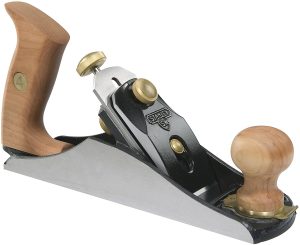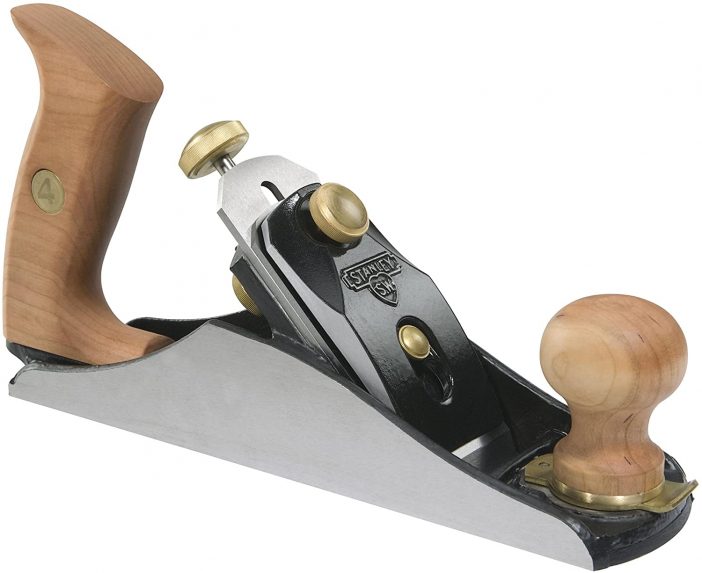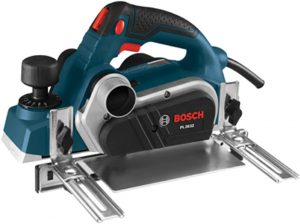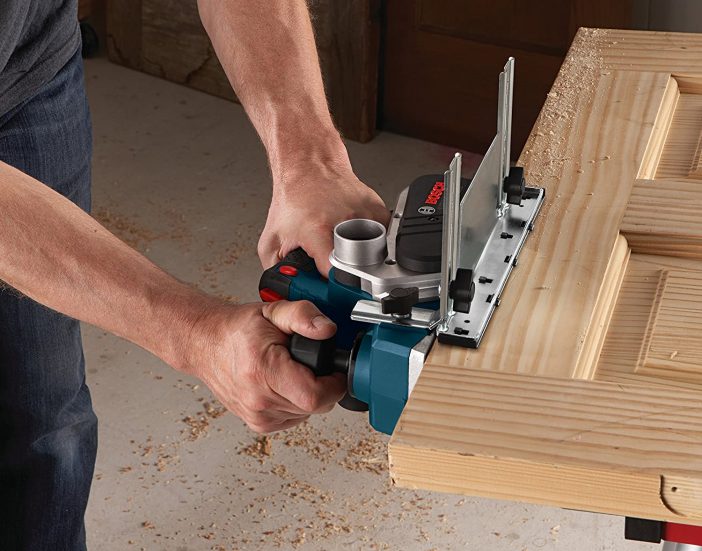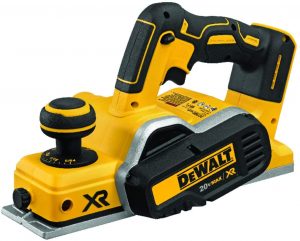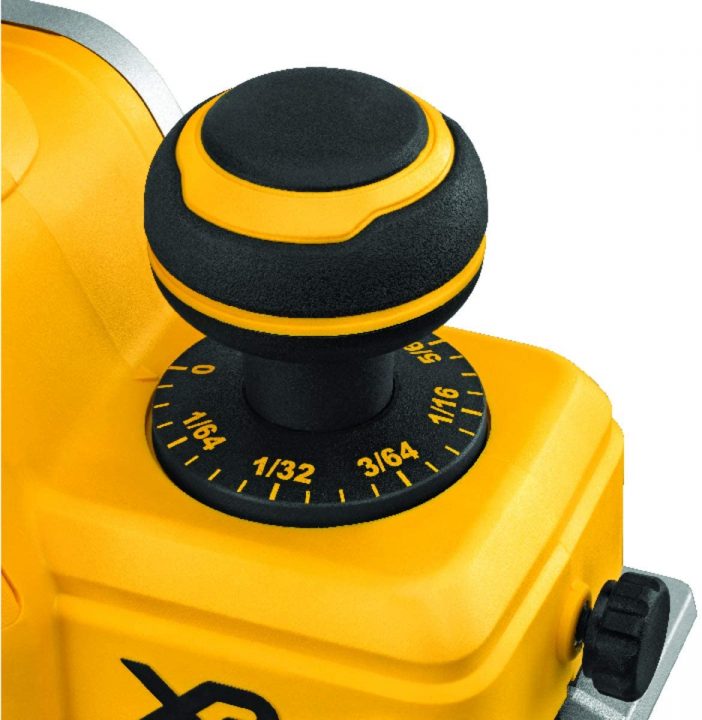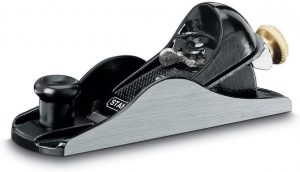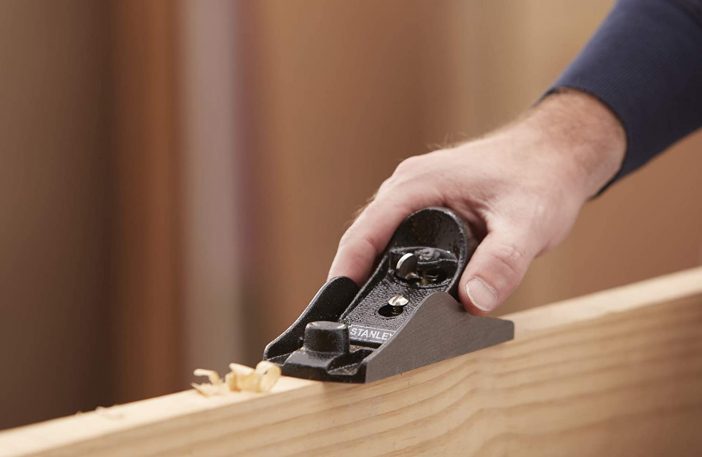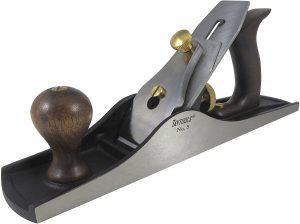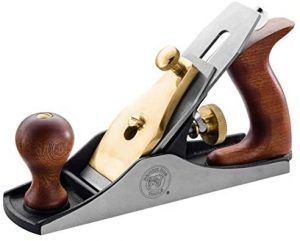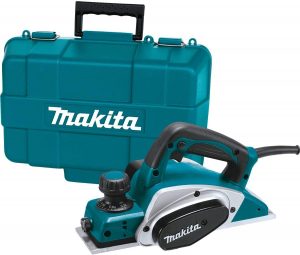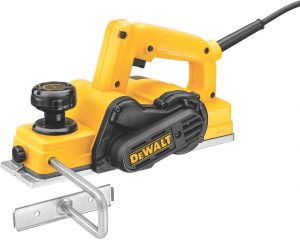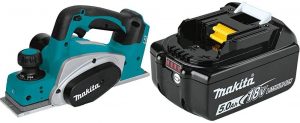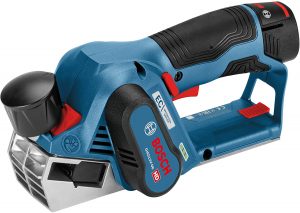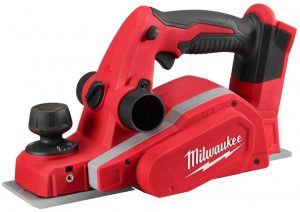The Best Plane for Doors in 2026
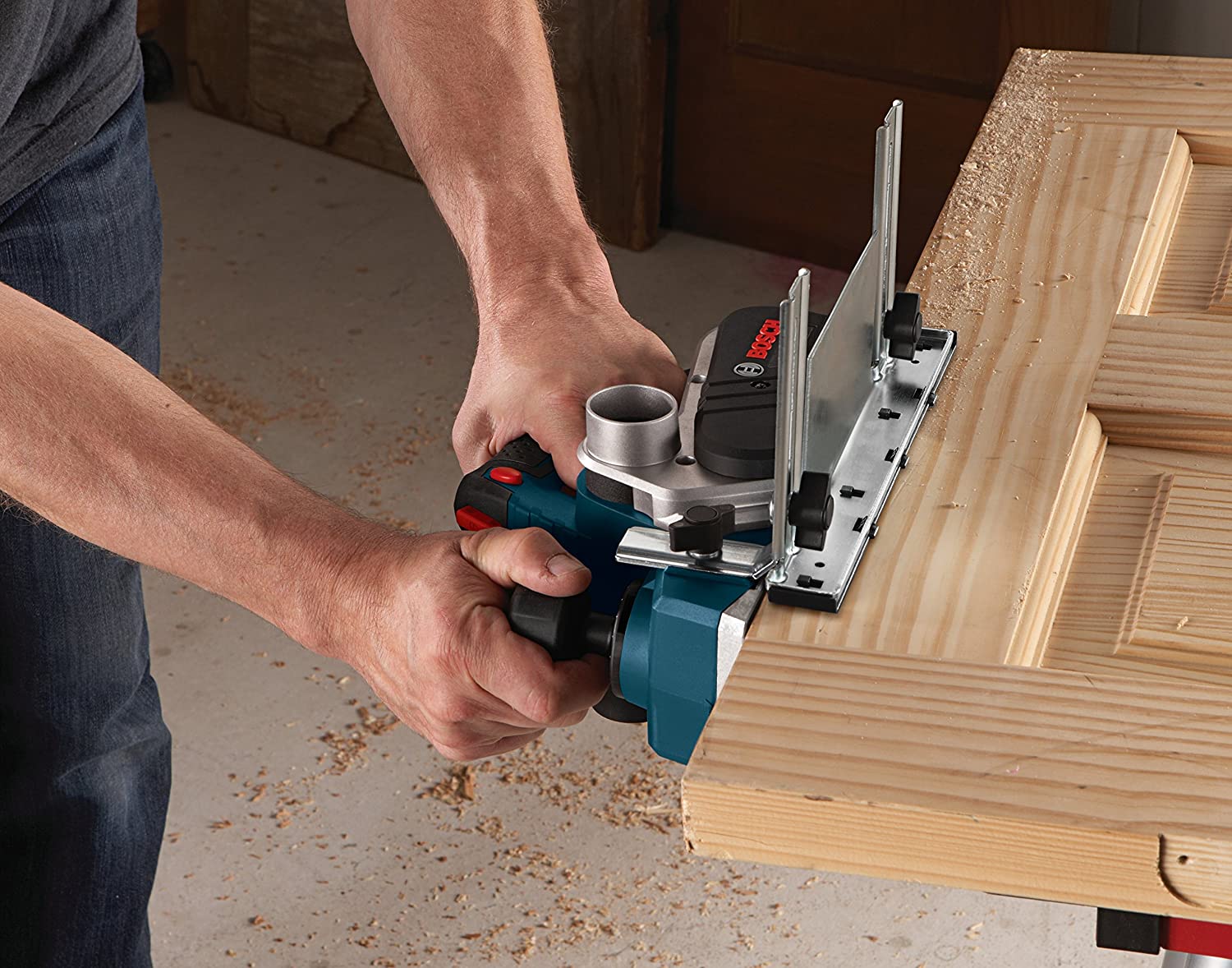
Door fitting and trimming represents a significant portion of woodworking projects in both professional and DIY settings. The plane market for door work has evolved considerably, with manufacturers now offering everything from traditional hand-powered models to advanced cordless systems. Modern door construction has also changed substantially - from solid wood to hollow core to engineered materials - affecting how different plane types perform in trimming applications.
Whether you're dealing with a door that needs minor edge adjustments or fitting a completely new door that requires substantial material removal, different plane types serve different purposes in this work. Understanding how different wood species behave under plane blades helps explain why the same tool produces different results in pine versus oak. The market spans from affordable hand planes under $50 to professional-grade electric models that can cost several hundred dollars.
The selection below represents some of the most commonly chosen planes for door work across different categories, based on market performance, user adoption rates, and technical specifications.
| Category | Popular Model | Analysis |
|---|---|---|
| Traditional Hand Plane for Doors | STANLEY Hand Planer, No.4 | 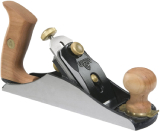 |
| Electric Plane for Doors | BOSCH 3-1/4 Inch Woodworking Hand Planer with Carrying Case, PL2632K | 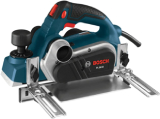 |
| Cordless Plane for Doors | DEWALT DCP580B 20V MAX Brushless Planer (Tool Only) | 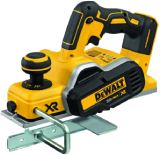 |
| Small Trimming Plane | STANLEY Hand Planer, Black/Red (12-220) |  |
Click to jump straight to each section.
Popular Planes for Door Work Analysis
Traditional Hand Plane for Doors: STANLEY Hand Planer, No.4
Traditional Hand Plane for Doors
The Stanley No.4 represents one of the most established designs in the woodworking plane market, with this model maintaining consistent specifications across decades of production.
This smoothing bench plane measures 13.1 inches in overall length and weighs 5.79 pounds, positioning it in the mid-range for manual planes used in door work. The model is classified as a smoothing bench plane, which places it in a category suitable for both material removal and finishing work.
The cutting blade uses A2 grade steel, a specification that addresses edge retention characteristics. This steel grade represents a balance between hardness and maintenance requirements compared to other blade steel options available in the market.
The construction includes a cherry wood handle and knob with brass adjustment components. These materials represent traditional choices in plane construction, with cherry wood offering durability characteristics and brass providing corrosion resistance for the adjustment mechanisms.
Stanley includes a limited lifetime warranty with this model, which is relatively standard for their traditional hand tool line. The plane comes factory-set, meaning it can be used immediately upon purchase without requiring initial setup, though users can adjust settings according to their specific requirements.
Market Position:
- Traditional Woodworking Market – This represents the established approach to door planing that existed before electric and battery-powered alternatives became widely available.
- Build Quality – The construction reflects traditional plane design elements that have remained consistent in the market for decades.
- Market Recognition – The Stanley No.4 design is widely recognized among woodworkers and represents a standard reference point in the traditional hand plane market.
Check the latest price on Amazon.
Electric Plane for Doors: BOSCH 3-1/4 Inch Woodworking Hand Planer with Carrying Case, PL2632K
Electric Plane for Doors
BOSCH 3-1/4 Inch Woodworking Hand Planer with Carrying Case, PL2632K
This Bosch electric planer operates with a 6.5 amp motor that generates 16,500 RPM, placing it in the higher performance range for corded electric planers used in door work.
The unit weighs 6.3 pounds, which represents a lightweight design in the electric planer category while still housing a motor capable of significant material removal rates. The tool incorporates precision-machined aluminum front and rear shoes, a design choice that affects the consistency of cuts and the tool's overall durability.
A notable feature is the spring-loaded stand system, which serves dual purposes of blade protection when the tool is at rest and surface protection for the workpiece area. This addresses one of the practical considerations in electric planer use where blade exposure can cause incidental damage.
The planer uses Bosch Woodrazor micrograin carbide blades that are reversible, effectively doubling the useful life before replacement becomes necessary. Blade depth adjustment operates through a front-mounted control knob with precision calibration.
The model includes what Bosch describes as the first ambidextrous lock-off release button in the power tool category, designed to prevent accidental starts. For extended use periods, a lock-on button option is available.
Chip ejection can be directed to either the left or right side of the tool through a chip ejection switch. This addresses workspace management during planing operations. Dust ports on both sides allow for connection to dust collection systems, with ball joint cord swivel designed to reduce cord interference during operation.
Technical Specifications:
- Motor Performance – The 6.5 amp motor generating 16,500 RPM places this model in the higher performance range for electric planers in its size category.
- Weight-to-Power Ratio – At 6.3 pounds with significant power output, this represents an efficient weight-to-performance ratio in the electric planer market.
- Feature Integration – The combination of safety features, dust management, and user convenience features represents comprehensive design integration for this tool category.
Check the latest price on Amazon.
Cordless Plane for Doors: DEWALT DCP580B 20V MAX Brushless Planer (Tool Only)
Cordless Plane for Doors
DEWALT DCP580B 20V MAX Brushless Planer (Tool Only)
This cordless planer operates on DeWalt's 20V MAX battery platform and features a brushless motor design that generates 15,000 RPM at no load conditions. Understanding what these power specifications actually mean helps explain why cordless planes perform differently than their amp ratings might suggest.
The brushless motor technology provides efficiency advantages over traditional brushed motors, including reduced maintenance requirements and improved power delivery characteristics under load conditions. The tool maintains consistent performance as battery charge decreases, a significant factor in cordless tool operation.
Working capacity spans 3-1/4 inches in width with depth adjustments available in 1/256-inch increments. The rebate capacity reaches 5/64 inches, which covers most door trimming requirements encountered in typical installations.
Depth adjustment operates through a front-positioned knob with calibration to 5/64 inches. Precision-machined aluminum shoes on both front and rear maintain cut parallelism throughout operation. The tool includes a kick stand for blade protection during rest periods.
Physical dimensions measure 8 x 6.94 x 16 inches with a total weight of 6.8 pounds, placing it in the mid-range for cordless planers. The ergonomic handle design addresses extended use comfort requirements.
This model is sold as a tool-only unit, requiring separate purchase of compatible DeWalt 20V MAX batteries and charging systems. Battery life varies significantly based on material type, cut depth, and battery amp-hour rating. Higher amp-hour batteries (such as 6.0Ah options) provide extended runtime compared to standard capacity units.
Battery Platform Considerations:
- 20V MAX Compatibility – This tool operates within DeWalt's established 20V MAX ecosystem, allowing battery sharing with other compatible tools in the platform.
- Brushless Motor Technology – The brushless design provides improved efficiency and reduced maintenance compared to brushed motor alternatives in cordless tools.
- Runtime Variables – Actual working time depends on battery capacity, material hardness, and depth of cut, with typical ranges varying from 30 minutes to several hours of intermittent use.
Check the latest price on Amazon.
Small Trimming Plane: STANLEY Hand Planer, Black/Red (12-220)
Small Trimming Plane
STANLEY Hand Planer, Black/Red (12-220)
This block plane measures 7.7 x 4.4 x 2.1 inches and weighs 1.6 pounds, positioning it in the compact plane category designed for localized trimming work.
The reduced size and weight make this plane suitable for situations where larger planes would be impractical, such as working on doors while they remain mounted in their frames. The single-hand operation design differs from larger planes that typically require two-handed operation.
The plane features machined sides, a cast iron base, and an adjustable cutter blade set at a 21-degree angle. This angle makes the plane particularly effective for cross-grain planing operations, which are common in door edge trimming work.
The design incorporates a finger rest at the front of the plane body, which serves both comfort and control functions during single-handed operation. Blade depth and alignment adjustments operate through standard mechanisms scaled for the smaller plane size.
The cast iron base construction provides the weight and stability necessary for effective planing despite the tool's compact overall dimensions. The machined sides ensure accuracy in applications where the plane's edge serves as a reference surface.
Compact Design Applications:
- Accessibility – The small size allows access to areas where larger planes cannot operate effectively, particularly important in door trimming applications.
- Single-Hand Operation – Unlike larger planes that require two-handed operation, this design allows for single-hand control while supporting the workpiece with the other hand.
- Price Point – Block planes typically represent the most affordable entry point into manual plane use for door work.
Check the latest price on Amazon.
Additional Market Options
Here are some additional planes that represent different approaches to door planing work.
Taytools 469607 Jack Smoothing Bench Hand Plane
Classified as a No 5 Jack plane, this 14-1/4″ model extends beyond smoothing plane dimensions for applications requiring more aggressive material removal.
Key Specifications:
- Weight: 5.45 pounds
- Width: 2-1/2 inches
- Bed angle: 45 degrees
Bench Dog Tools No. 4 Smoothing Plane
This smoothing plane features precision-ground flat sole construction, designed to maintain consistent surface contact across the full plane length.
Key Specifications:
- Blade: 1/8 inch hardened carbon steel
- Wood components: Solid Sapele for tote and knob
- Includes storage case
Makita KP0800K 3-1/4-Inch Planer Kit, Blue
This Makita corded electric planer delivers significant power output suitable for heavy-duty door work and extended operation periods.
Key Specifications:
- Motor: 6.5 amp generating substantial cutting power
- Weight: 5.7 pounds for extended use comfort
- Cutter head: Two-blade design operating at 17,000 RPM
DEWALT Hand Planer Kit, 5.5-Amp, 3-1/4-Inch (D26677K)
This DeWalt corded planer operates at high cutting speeds, producing 34,000 cuts per minute for rapid material removal with fine surface finish.
Key Specifications:
- Dimensions: 7.8 x 17 x 10 inches
- Weight: 10 pounds for substantial stability during operation
- Blade technology: Reversible carbide blades for extended service life
This Makita cordless planer operates on the 18V LXT platform and demonstrates high power-to-weight efficiency in battery-powered operation.
Key Specifications:
- Cutter head: Two-blade carbide design
- Motor speed: 15,000 RPM for effective cutting performance
- Total weight: 7.4 pounds including battery
Bosch 12V Max Planer (Bare Tool) GHO12V-08N
This compact Bosch cordless planer operates on the 12V platform, offering efficiency in applications where full-size planers are unnecessary.
Key Specifications:
- Runtime: Up to 33 feet of planing per amp-hour of battery capacity
- Motor speed: 14,500 RPM with brushless design
- Planing width: 2.2 inches suitable for door edge work
Milwaukee 2623-20 M18 3-1/4″ Planer (Tool Only)
This Milwaukee cordless planer operates on the M18 battery platform and handles both softwood and hardwood applications effectively.
Key Specifications:
- Battery platform: 18-volt M18 system
- Material removal: Up to 5/64 inch per pass
- Depth positions: 20 lockable settings for precise control
Common Questions About Door Planes
What are the main tool types used for door shaving work?
Door shaving work typically involves wood planes, which are available in several categories. Traditional manual planes require human power for operation and include smoothing planes (like the No. 4) and block planes for smaller work. Electric corded planes use motor power for faster material removal, typically ranging from 5.5 to 6.5 amp motors. Battery-powered cordless planes offer mobility without cord constraints, operating on various voltage platforms from 12V to 20V systems.
What timeframes are typically involved in door trimming work?
Door trimming timeframes vary significantly based on multiple factors. Tool type affects timing, with power tools generally operating faster than manual tools. Whether doors require removal from frames influences total time, as does the amount of material requiring removal. User experience level affects efficiency substantially. Professional carpenters or experienced DIYers typically complete new door fitting and trimming within 2-4 hours, though this varies based on door complexity and fitting requirements.
What does door edge shaving work typically involve?
Door edge shaving involves material removal from door sides or edges. The process typically begins with measuring and marking the areas requiring material removal. Doors usually need removal from hinges for stable working positions. Consider the door's construction type - solid wood doors can handle substantial material removal, while hollow core doors have only 1-1.5 inches of solid perimeter frame before reaching the hollow core. Wood planes remove material through multiple passes rather than single heavy cuts. Work continues until reaching marked layout lines, followed by door reinstallation and fit testing.
What causes doors to scrape against floors?
Floor scraping issues can result from several causes. Debris under doors represents the most common immediate cause, often involving small stones or accumulated material. Loose door hardware, particularly hinge screws, can create alignment problems over time. Structural settling or floor changes can alter door clearances. When debris removal and hardware tightening don't resolve scraping, material removal from door bottoms using appropriate planes typically addresses the problem.
The plane market for door work continues to evolve in 2026, with manufacturers focusing on efficiency improvements, battery technology advances, and ergonomic design enhancements. Understanding the different categories and their typical applications helps in evaluating which tools might serve specific door work requirements.
